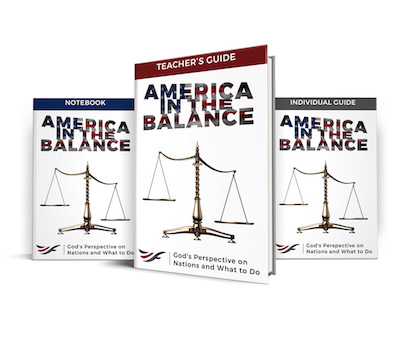Property prices fell 36%, when adjusted for inflation, between the U.S. real estate peak in 2006 and the year 2012.[1] Since then, real estate prices have been steadily rising and are once more near their pre-recession highs. Low mortgage rates helped to make 2016 a great year for real estate investors, with home values, prices, and sales showing some of their strongest numbers since the economic downturn.[2] This has made real estate an attractive opportunity for investors. However, mortgage rates are rising, and shortly after Donald Trump’s inauguration, the Department of Housing and Urban Development suspended the Obama administration’s planned reduction of mortgage insurance premium rates.[3]
Despite the rise in home prices, home ownership rates remain the lowest in 20 years, and the average age of homeowners is 10 years higher than in 1994.[4] However, this has encouraged many investors who believe that a wave of Millennials are poised to purchase homes.[5] Some experts are even predicting 6 to 6.5 million home sales in 2017 along with 160,000 new homes being built each year up to 2024.[6]
In contrast, Bank of America Corporation analyst, Chris Flanagan, predicted in 2015 that U.S. home prices would experience three consecutive years of modest decline beginning in 2017. He wrote, “We do not see income growing fast enough to keep up with the past few years of rapid increases in home prices”[7] Likewise, real estate analyst, Mark Hanson, notes that housing prices are the same to 20% higher than they were during the 2006 real estate bubble, but median incomes are down 5% to 10%. He believes the housing market is being propped up by unorthodox capital at a time when average families are not buying because of high prices. Believing that U.S. housing prices are inflated 25% to 60% higher than the market can support, Hanson anticipates a sudden resetting of market prices to 20% or 40% lower than they are today.[8]
Likewise, founder of Dent Research and former financial consultant, Harry Dent, believes a massive real estate market correction is imminent. He writes:[9]
[T]he best way to gauge your downside risk is to look up the value of your property in January 2000. … When the bubble bursts, this is the point to which your property is likely to fall—or perhaps even 10% to 20% lower. … As a rule, bubbles always retreat from their peaks to where they began, or even a bit lower … To just erase the bubble that started in January 2000, home prices would have to fall 56% from their top in early 2006. That’s 49% from the recent highs in early 2016.
If home prices fall back to their previous lows of 1996, that would mean a 67% decline from the top and 59% from recent highs. … And commercial real estate will fall even more, just like it did last time around.
Given the inflation of the real estate market and the potential of catastrophic losses in a market correction, real estate cannot be the financial refuge that we seek.
This article is excerpted from the paper “Seeking Refuge in a Precarious Economy.”
Free Downloads
Share...
1. Dent, Harry Jr. The Sale of a Lifetime: How the Great Bubble Burst of 2017–2019 Can Make You Rich, 86. New York City: Penguin Random House, 2016.
2. Martin, Erik. “Housing Market Forecast: Experts Weigh In On 2017 Real Estate.” The Mortgage Reports, October 12, 2016. Accessed January 24, 2017. http://themortgagereports.com/22472/housing-market-forecast-experts-predict-2017-real-estate.
3. Chamberlain, Samuel. “In First Executive Order, Trump Tells Agencies to Ease Obamacare Burden.” Fox News: Politics, January 20, 2017. Accessed January 24, 2017. http://www.foxnews.com/politics/2017/01/20/in-first-executive-order-trump-tells-agencies-to-ease-obamacare-burden.html.
4. Fry, Richard and Anna Brown. “In a Recovering Market, Homeownership Rates are Down Sharply for Blacks, Young Adults.” Pew Research Center, December 15, 2016. Accessed January 24, 2017. http://www.pewsocialtrends.org/2016/12/15/in-a-recovering-market-homeownership-rates-are-down-sharply-for-blacks-young-adults.
5. Collins, Gord. “US Housing Market Forecast is Looking Good 2017 to 2020 and Beyond.” Gord Collins Blog, January 15, 2017. Accessed January 24, 2017. http://www.gordcollins.com/real-estate/us-housing-market-looking-strong-2016-to-2020.
6. Ibid.
7. Shenn, Jody. “Bank of America: U.S. Home Prices Set for a Fall in 2017.” Bloomberg, June 1, 2015. Accessed January 24, 2017. https://www.bloomberg.com/news/articles/2015-06-01/u-s-home-prices-set-for-a-fall-beginning-in-2017-bofa-says.
8. Jennings, Daniel. “Is America Facing Another Real Estate Bubble?” Seeking Alpha, March 15, 2016. Accessed January 24, 2017. http://seekingalpha.com/article/3958565-america-facing-another-real-estate-bubble.
9. Dent, Harry Jr. The Sale of a Lifetime: How the Great Bubble Burst of 2017–2019 Can Make You Rich, 316–317. New York City: Penguin Random House, 2016.









